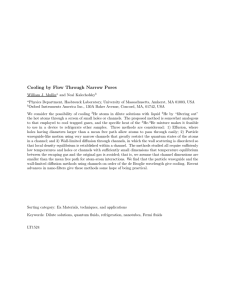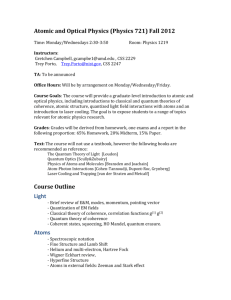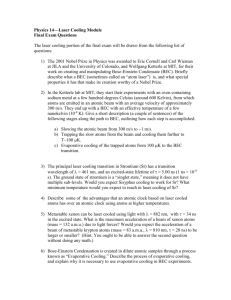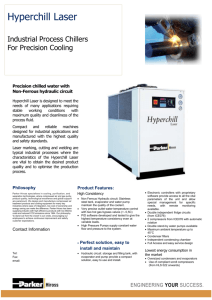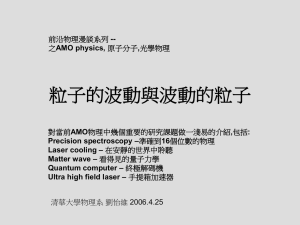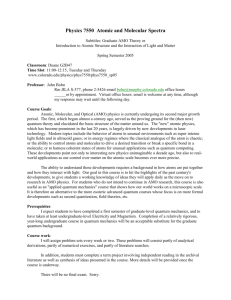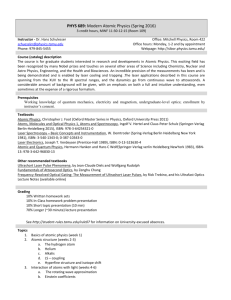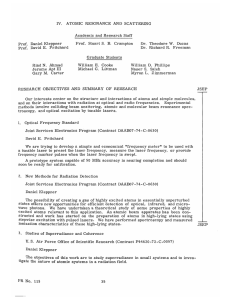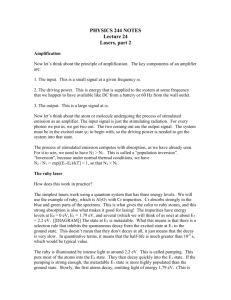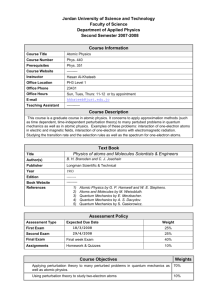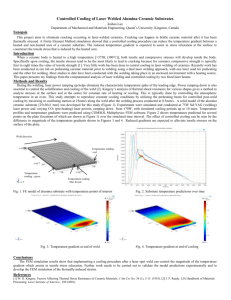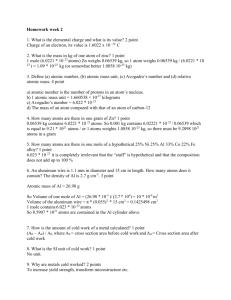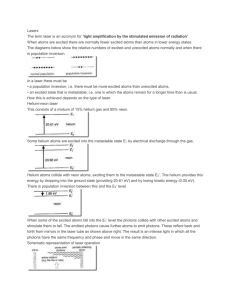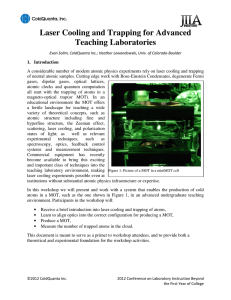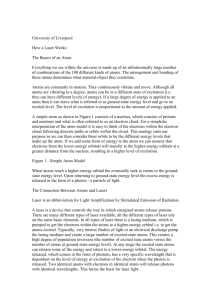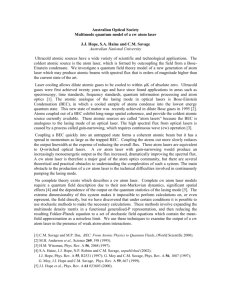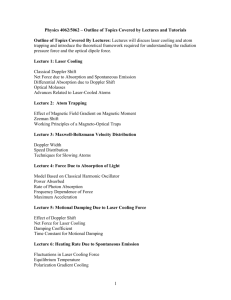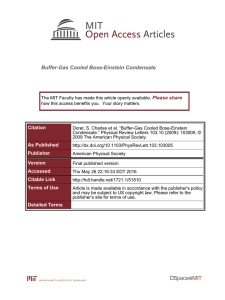Physics of Ultracold Atoms
advertisement
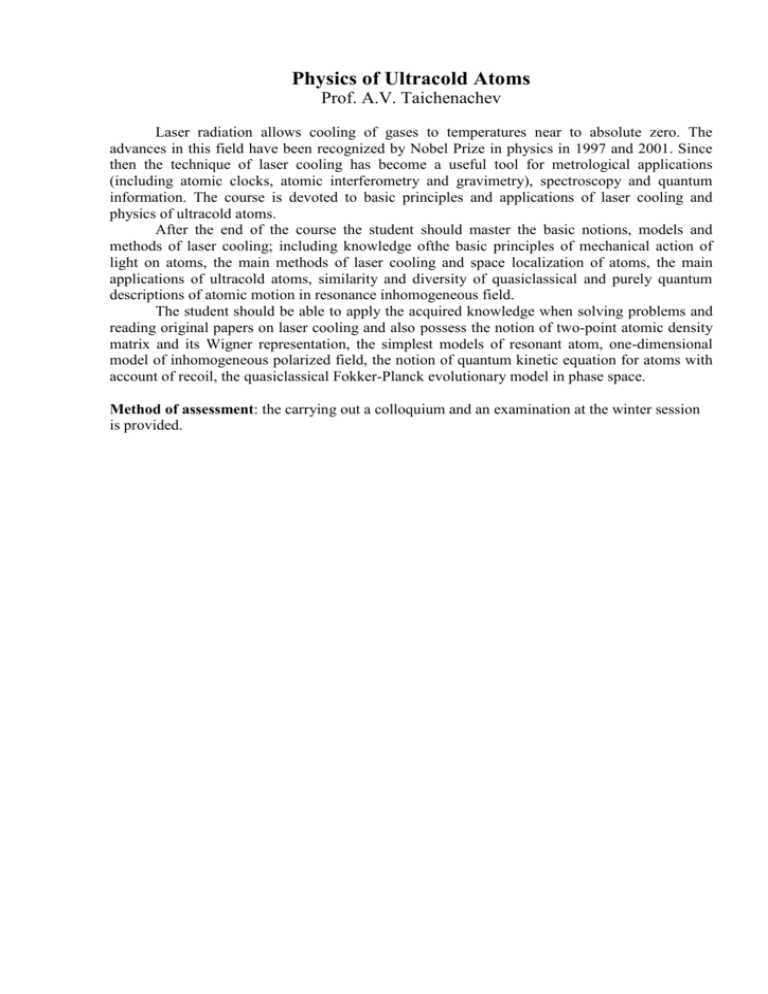
Physics of Ultracold Atoms Prof. A.V. Taichenachev Laser radiation allows cooling of gases to temperatures near to absolute zero. The advances in this field have been recognized by Nobel Prize in physics in 1997 and 2001. Since then the technique of laser cooling has become a useful tool for metrological applications (including atomic clocks, atomic interferometry and gravimetry), spectroscopy and quantum information. The course is devoted to basic principles and applications of laser cooling and physics of ultracold atoms. After the end of the course the student should master the basic notions, models and methods of laser cooling; including knowledge ofthe basic principles of mechanical action of light on atoms, the main methods of laser cooling and space localization of atoms, the main applications of ultracold atoms, similarity and diversity of quasiclassical and purely quantum descriptions of atomic motion in resonance inhomogeneous field. The student should be able to apply the acquired knowledge when solving problems and reading original papers on laser cooling and also possess the notion of two-point atomic density matrix and its Wigner representation, the simplest models of resonant atom, one-dimensional model of inhomogeneous polarized field, the notion of quantum kinetic equation for atoms with account of recoil, the quasiclassical Fokker-Planck evolutionary model in phase space. Method of assessment: the carrying out a colloquium and an examination at the winter session is provided.
